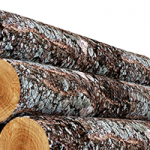Have you ever wondered whether you can burn coal in a wood burner? Perhaps you’ve got access to coal or multi-fuel and you’re thinking of putting it in your stove instead of logs. If so, before you go ahead and order a few sacks, bear in mind that household coal and even smokeless fuels should not be burned in wood burning stoves. In fact the hint is actually in the name – if you want to burn coal and smokeless fuel, you’ll need a multi-fuel stove and not a wood burner. A log burner should only ever be used to burn wood.
The difference between multi-fuel and wood burning stoves:
The most fundamental difference between the two kinds of stoves all boils down to design. In a wood burner, the firewood is burnt on a flat floored stove, whereas coal and smokeless fuels are placed on a raised grate within the burner. Why the difference? Well, wood requires air from above to initiate combustion, while coal and smokeless fuels need air from both above and below.
Coal creates far more ash than wood.
In addition, multi-fuel stoves need somewhere for the ash to collect. Wood burning stoves are not designed for the higher ash content of coal and smokeless fuels. Most woods have a very low ash content, often as low as 1-2% on wet basis. Compare this to typical home domestic coal that has an ash content of anything between 5-7%, with bituminous coal having a whopping 13-15% ash content.
Burning coal in a wood burner could cause serious damage to your stove.
Furthermore, since coal needs an air supply from below in order to burn, it’s highly likely to cause serious damage to your wood-burning stove, which hasn’t been designed to cope with hot coals. As coal burns at a hotter temperature than wood, it’s likely to make your log burner red hot and ultimately cause it to warp and possibly even melt.
Remember! You should always use well-seasoned wood.
As you can see, you should never be tempted to use anything other than wood in your wood-burning stove. For optimum results this should be well-seasoned wood with a moisture content of 30% or less. You can tell seasoned logs as they will typically have bark that comes away from the wood easily. You’ll also see splits across the grain, and if you knock two logs together you’ll hear a hollow ringing sound rather than the dull thud that is normally heard when two pieces of wet wood are knocked together.





Leave a Reply
Want to join the discussion?Feel free to contribute!